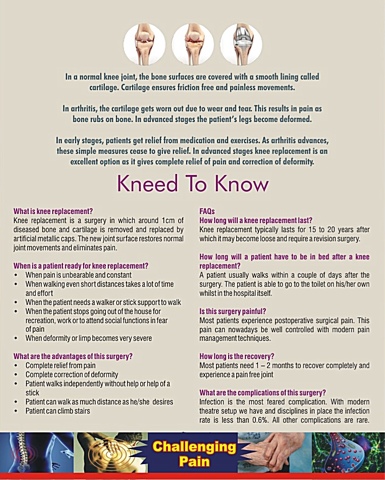Low Back Pain
The spine is a complex structure of the human body. It starts from the brain and extends to the pelvis. It comprises of the neck, the upper back and the lower back. The back is made up of individual bones called vertebrae. Each vertebra is separated from the other by discs. The vertebrae conceal the spinal cord which is a downward extension of the brain. There are in addition a number of muscles in the back which make the vertebral column a mobile structure (so you can move your neck and bend your back).
In childhood the back is mobile, flexible and pain free. As a person grows older, the back ages as well. The discs degenerate and the joints wear out (arthritis and spondylitis). This is a natural process that happens to all people. Eventually in old age the back loses its flexibility and becomes stiff. Few lucky people undergo this natural process with little or no pain. Most of us however experience pain at some point during this course. This pain is the typical mechanical pain which most of us have had. It is the pain that is episodic (comes and goes). It is aggravated by exertion … sitting or standing for long periods of time. It is the pain that comes at the end of a long tiring day or during a bumpy ride. It is the pain that we get when we get up in the morning or get up after sitting for a long time. That is the commonest type of back pain and the type that we should not worry about! It does not need an X-ray and definitely not an MRI. We as doctors see this pain more nowadays because of poor lifestyle which includes unearthly working hours, poor postures while sitting, obesity and a lack of physical exercise. People who have this pain need to take rest till pain subsides, do back strengthening exercises and work on their postures while sitting, working and lifting weights. Unfortunately many such patients are unnecessarily over investigated with X-ray and MRI and some are even advised surgery! Patients need to be careful because surgery for this pain fails.
Another type of pain in the lower back occurs because of a problem elsewhere. Sometimes patients with a viral illness have fever, severe body ache and low back pain. This type of back pain is part of the illness and will disappear when the patient recovers from the viral fever. Many women get severe low back pain during pregnancy and after delivery. This is because of the strain of carrying the baby and hormonal changes. Such pain may continue for many months after delivery. But this pain is temporary and will subside on its own and one should not worry about it. Some women also get back pain during their periods. This pain is not related to the back and if it is very severe one should see a gynaecologist. At times a kidney stone causes back pain. This pain is intermittent, colicky and travels to the groin. It is usually very severe and your doctor will be able to diagnose it easily and guide you accordingly.
Which then are the types of back pain one should worry about? If the back pain is sudden and severe or unbearable, then obviously one needs to see a doctor. Most of such pains are due to a severe muscular sprain and these patients get better with rest and medication. Some of these patients have more serious problems like a slipped disc. In older patients the severe sudden pain may be due to a fracture of the fragile vertebral bone (osteoporosis).
One type of back pain that needs to be investigated is the one that doesn't get better. Especially if it interferes in the persons daily life, his/her job or recreation. And especially if routine treatments have failed.
Many times back pain is associated with shooting pain in the legs (sciatica). This is due to nerve irritation usually caused by a slipped disc.Again most patients with sciatica get better with non surgical methods of treatment and very few need an MRI and surgery.
Back pain after an accident needs to be assessed to rule out fracture or other injury.
The most serious types of back pain are due to infection or tumours. Luckily both these conditions are also the rarest.
To summarise low back pain is common. Many people suffer from it. The commonest type of low back pain is related to lifestyle issues like poor posture and lack of exercise. There is no reason to be overly anxious about low back pain. Don't be in a hurry to spend your hard earned money on an MRI!





